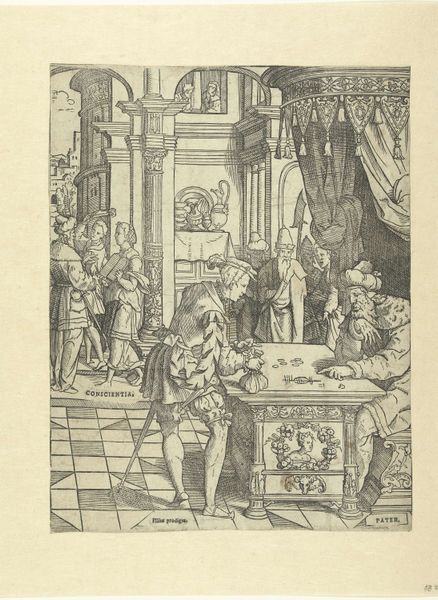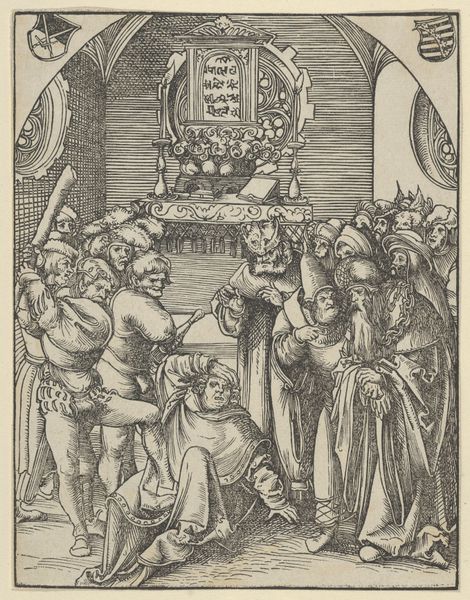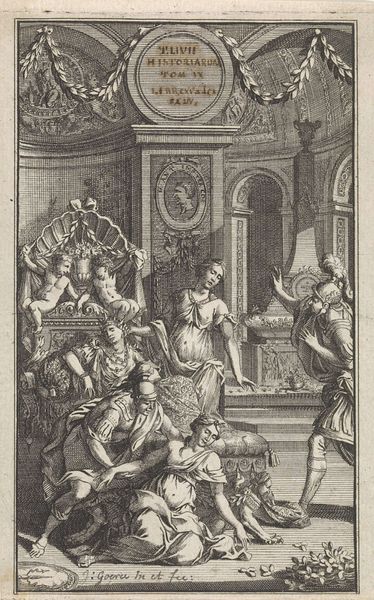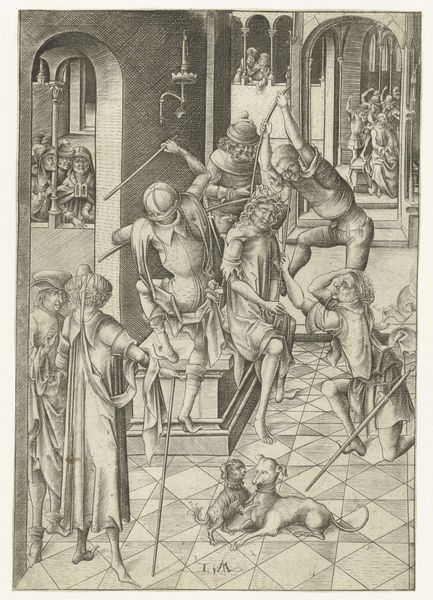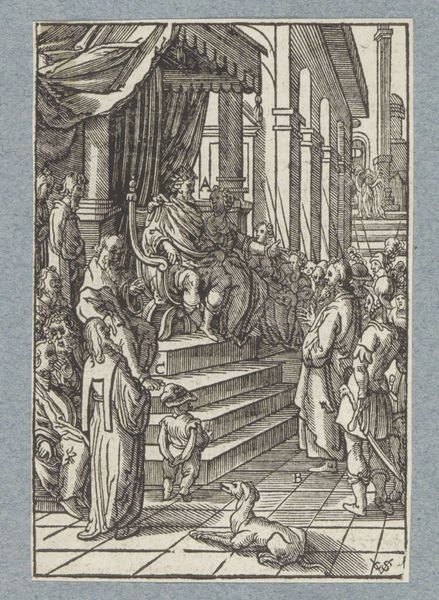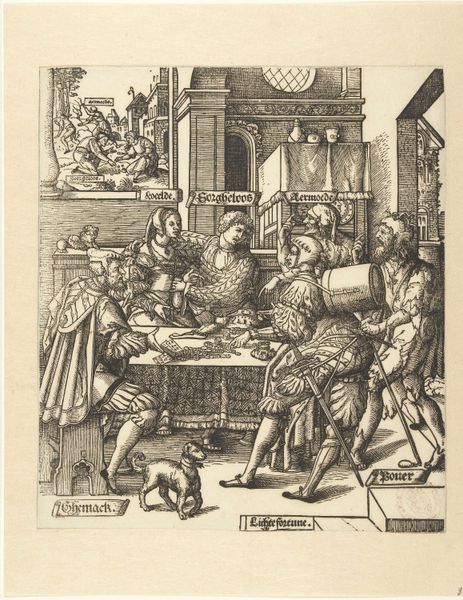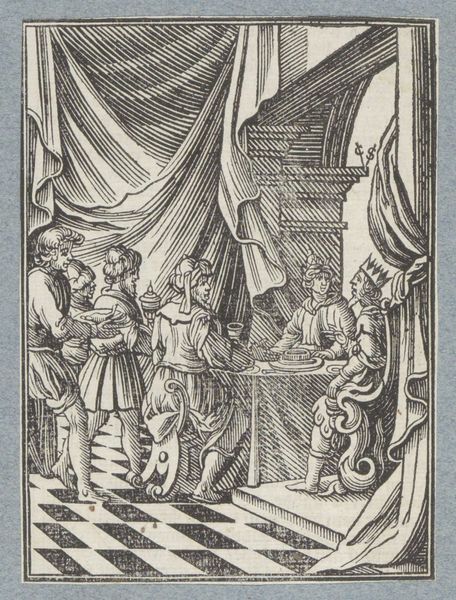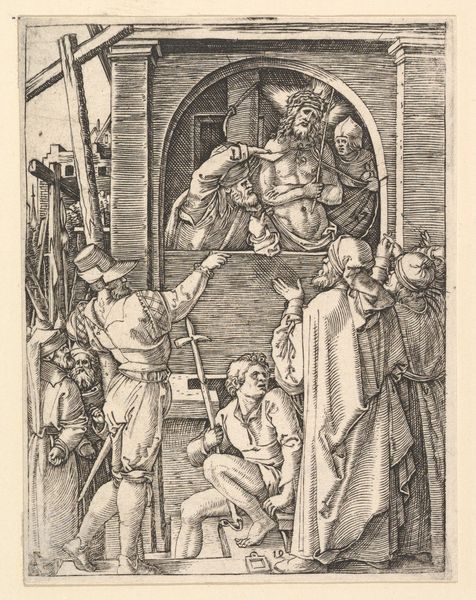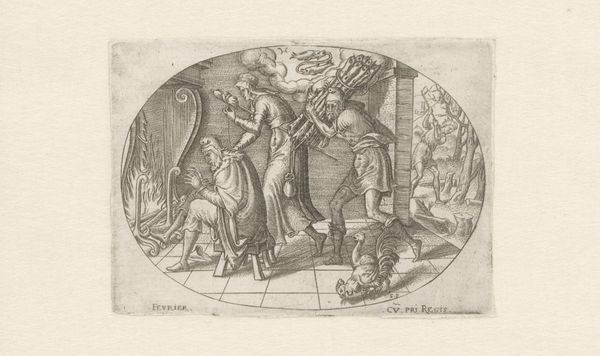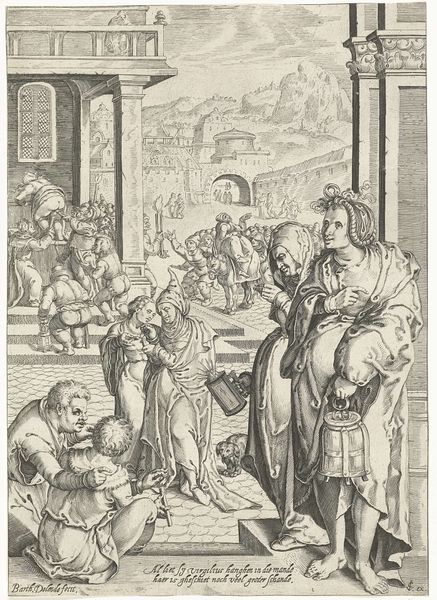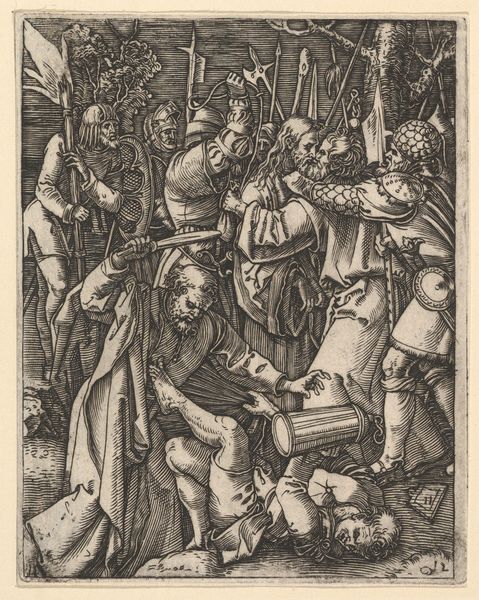
print, engraving
#
narrative-art
#
baroque
# print
#
figuration
#
history-painting
#
engraving
Dimensions: height 179 mm, width 127 mm
Copyright: Rijks Museum: Open Domain
Curator: Antonio Tempesta gives us "Constantijn benoemt nieuwe ridders" from somewhere between 1565 and 1630. It's currently held in the collection of the Rijksmuseum. My eye goes to the dense detail of the print itself. Editor: It's certainly detailed. Initially, the mood feels quite formal, almost ceremonial, yet the scale lends it a sense of intimacy, a feeling of being drawn into this historical moment. What do you think gives this print its symbolic weight? Curator: Absolutely, the ceremonial aspect is front and center. It's essentially an announcement of power and a divinely ordained social order, steeped in both religious and historical symbolism. Editor: Tell me more about that ordering. The architectural elements framing Constantine seem intentional. How do they affect the viewer? Curator: Certainly. The placement of Constantine under the draped canopy, his higher positioning compared to the kneeling figures, all underscore his elevated status, the divine right of leadership—not to mention how that placement casts him within a frame, literally and figuratively. Editor: It's hard to miss the dog in the foreground. Do you read that as an intentional inclusion? Curator: Good eye. The dog, in a symbolic reading, could represent loyalty and vigilance, qualities expected of the new knights but it's not entirely straightforward. In some contexts dogs have signified other elements as well—do you agree? Editor: I'd say that's fitting here; dogs often suggest a commitment to truth as well. What do you find most interesting about the narrative conveyed here? Curator: I think what strikes me is how it takes a very specific moment—the knighting ceremony—and uses it as a way to construct a grander narrative about power, piety, and legacy within an enduring social and political framework. Editor: It gives such a clear depiction of baroque social stratification. The layers of authority are right there on the surface. Looking closely today, it is like looking into another world. Curator: Agreed. Seeing how these symbolic and structural components build the desired statement about legacy and power, it offers a fascinating way of examining art as cultural memory.
Comments
No comments
Be the first to comment and join the conversation on the ultimate creative platform.
